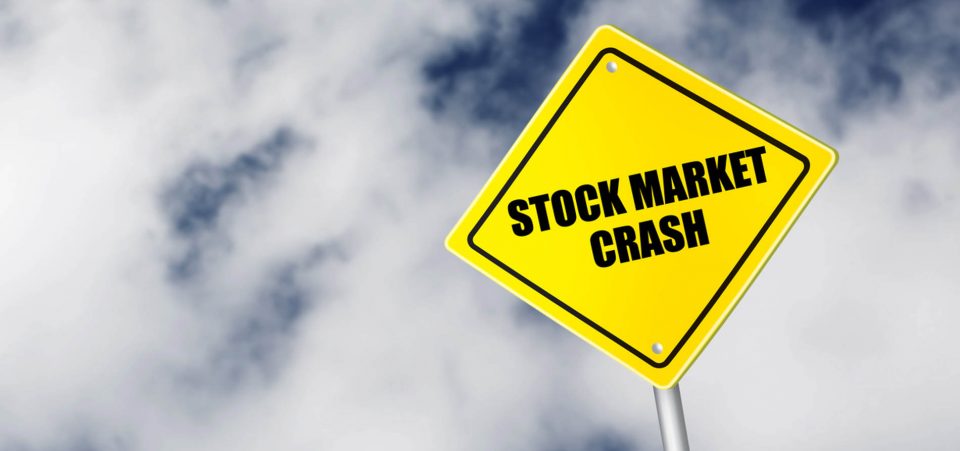Economic Collapse Slips Through the Hands of the Doomsday Clock
They said Donald Trump would bring economic collapse, yet the Dow Jones has gone above 20,000. Now, because of Donald Trump, the Doomsday Clock has moved 30 seconds closer to midnight. In other words, the omnipresent “experts” believe that the world is closer to coming apart in a nuclear apocalypse than last year. (Source: “Nuclear ‘Doomsday Clock’ ticks closest to midnight in 64 years,” Reuters, January 26, 2017.)
Where was the Doomsday Clock when peace-loving—but drone-happy—Barack Obama was very much at the White House? What did the watchmaker and the train engineer say about the Doomsday Clock then? It’s totally off the rails!
Rather, it’s economic collapse—not because of Trump—that remains a real possibility. It deserves much more attention.
But nuclear apocalypse? If Trump moved the Doomsday Clock 30 seconds closer to midnight, Hillary Clinton should have moved it ahead by at least a minute. Whereas Trump is looking for better relations with Russia, Clinton seemed excited by the prospect of going full Cold War on Vladimir Putin’s posterior.
Meanwhile, the experts ignore the true problems faced by people in America and around the world. That’s because platitudes and jargon can no longer hide the threat of economic collapse. The Doomsday Clock is a convenient distraction from real issues.
Like clockwork, the scientists, including 15 Nobel laureates, who regulate the Doomsday Clock, had to mention it. They just had to find another slot into which to fit their climate change/global warming doom and gloom. What they showed is that the sheeple media loves to bombard the public with catastrophic headlines and desperate pleas.
At the very mention of the word “scientists,” the media expects people to believe its latest pronouncement, as if Moses had just come down the mountain. The frequent use of the term “scientist” atop most headlines these days is not accidental. It’s meant to stop the reader from thinking; it’s an automatic mark of truth, honesty, and authority.
There’s No Need for Proof
The Doomsday Clock is one nuclear-proportion example of the “appeal to anonymous authority” fallacy. For reference, this is a logical fallacy of the form in which, if authority “S” believes that statement “W” is true, then W must be true.
The media’s tendency to bombard the world with catastrophic headlines and desperate pleas gets in the way. It stops audiences from paying attention to the information that often disproves the source of fear: data that, in many cases, deny those same alarms. It, therefore, discourages the development of solutions based on reason rather than on panic.
The Doomsday Clock has come a full 23 hours away from its original purpose. It originally had some merit, but now the fracas of grievances—and rather biased ones at that—that it purports to highlight has become too diluted and vague to have any real meaning.
The University of Chicago devised the Doomsday Clock in 1947. Since its activation, the clock has been moved 19 times, swinging to a minimum of two minutes to midnight in 1953. That’s when the United States decided to adopt the hydrogen bomb. The maximum distance from midnight was 17 minutes, which occurred in 1991, signaling the end of the Cold War.
In 1947, members of the Bulletin of the Atomic Scientists changed their official publication from a newsletter, first issued in 1945, to a monthly periodical. Thus, the co-founder of the magazine, Hyman Goldsmith, asked artist Martyl Langsdorf, who was the wife of Manhattan Project researcher Alexander Langsdorf, to design the clock. It was first set at seven minutes to midnight—23:53—in the June 1947 issue of the bulletin.
Since that first publication of Bulletin of Atomic Scientists, the Doomsday Clock was its cover. It symbolizes the bulletin’s founders and the scientific community’s commitment to inform the public and world leaders about the danger of nuclear weapons. That’s an admirable and agreeable goal.
Doomsday Clock and the Fate of the Planet
The latest decision to move the minute hand derives from heightened concerns about the fate of the planet. The scientists cited a sharp rise of nationalism in the world. Naturally, the concerned scientists could not have skipped President Donald Trump; yes, he mentioned the need to upgrade America’s nuclear weapons.
However, the scientists should have noticed that Trump intends to engage with Russia diplomatically. In effect, the nuclear war threat with Russia is far lower.
But Trump has indicated that he believes that global warming is a hoax. By the logic of the Doomsday Clock scientists, an opinion is enough to move us closer to the brink.
Nuclear weapons are real and they are destructive. Their capacity to deliver deadly retribution is not a theory. But, as with so many other things, the end of the Cold War and the dissolution of the nuclear Iron Curtain forced change. Thus, nuclear war became a “stunted” threat.
To stay relevant, the Doomsday Clock people decided to join the next apocalyptic bandwagon. But, rather than focus on the real threat of economic collapse—and we came remarkably close in 2007/2008—the scientists joined the most popular club in town: the global warming, aka climate change casino.
Doomsday Clock Has Missed Major Threats Before
The Doomsday Clock’s long hands have moved according to the political climate between the U.S. and U.S.S.R. and their respective arms race. The darkest moment came in 1953, when the U.S.S.R. tested its H-bomb. Strangely, the Doomsday Clock did not move at all during the Cuban Missile Crisis—the closest the world ever came to nuclear war. It also seems to go closer to midnight every time a Republican administration replaces a Democratic one.
After these episodes of ordinary nuclear madness, the clock has experienced periods of relative rest, reaching the unbeaten record of less than 17 minutes to midnight, recorded after the fall of the Berlin Wall in 1989 and when the U.S.S.R. became simply Russia and several smaller countries in 1992.
With the new millennium, the changes were momentous. The nuclear threat saw the arrival of other types of disasters that could put the entire global ecosystem at risk, including humans. The first to enter the list was climate, devastated by our hyper-technological society.
Nuclear war has simply been forgotten. Millennials have never known its threat, so for them it wasn’t the main threat to the future of humanity. Given the quality of history education in modern “trigger warning” and “safe-space” schools, one even doubts that Millennials understand just how much of a threat that nuclear war is.
So now, the Doomsday Clock focuses more on the theory of climate change and greenhouse gases like carbon dioxide (which is necessary for plants). With this logic, CO2 is as dangerous as enriched uranium. Luckily, the Doomsday Clock still claims to consider new developments in the field of biological weapons and genetic engineering, issues on which the Bulletin of the Atomic Scientists started to put attention.
However, the Doomsday Clock would be far more useful if it were to consider the widespread poverty, underemployment, and unemployment that is spreading in the developed world. The rising trend of automation, moreover, will create all kinds of problems if we enter this next phase of human evolution without a plan.
Economic Collapse Is the Major Threat to the World
Unfortunately, the Doomsday Clock misses many dramatic and real problems. There are as many ways to treat diseases as there are biological weapons to generate new illnesses. Meanwhile, many of the newly introduced technologies (such as nanotechnology, for example) have no regulatory systems. Technology is entering a Wild West phase.
Technology has no scruples, of course, and the ultimate combination of social, economic, and ethical problems is just around the corner. Even before automation becomes a problem, economic collapse could be around the corner.
Professor Ted Malloch, who is one of the top picks to serve as U.S. ambassador to the European Union (EU) by the Trump administration, sends a dire warning. He says that the end of the eurozone approaches. He even proposes a time period: 18 months from now. (Source: “Euro could ‘collapse’ in next 18 months, warns the man tipped as Trump’s EU ambassador pick,” The Telegraph, January 26, 2017.)
Malloch is not alone in arguing that the euro will collapse. Joseph Stiglitz, makes the same argument from a left perspective in his book The Euro: How a Common Currency Threatens the Future of Europe, published in 2016 by Norton & Company.
Under Trump, unlike under Obama, the United States will be unlikely to coerce the eurozone countries to remain together, as happened after the referendum in Greece.
The eurozone collapse could set off a financial earthquake. Economic collapse is a genuine possibility. That will be the true and probable “midnight.” It would be wise for the Doomsday Clock to start considering economic problems.
The world may already be in an “economic collapse” phase. Just as World War I was not started by the murder of Archduke Franz Ferdinand alone, so is economic collapse not a singular event. It’s a process that can take hours or years. In other words, despite the economic recovery and the Dow Jones crossing above the 20,000 mark, the world may still be under the weight of the 2008 financial crisis and related global economic collapse.
If there is one lesson that the world should have learned, it is to never underestimate the market’s power to wield damage. The false dream of a quick recovery is a lesson that those who have studied the Great Depression should always keep in mind. The Doomsday Clock might want to help us avoid getting beguiled by easy and futile enthusiasms.






